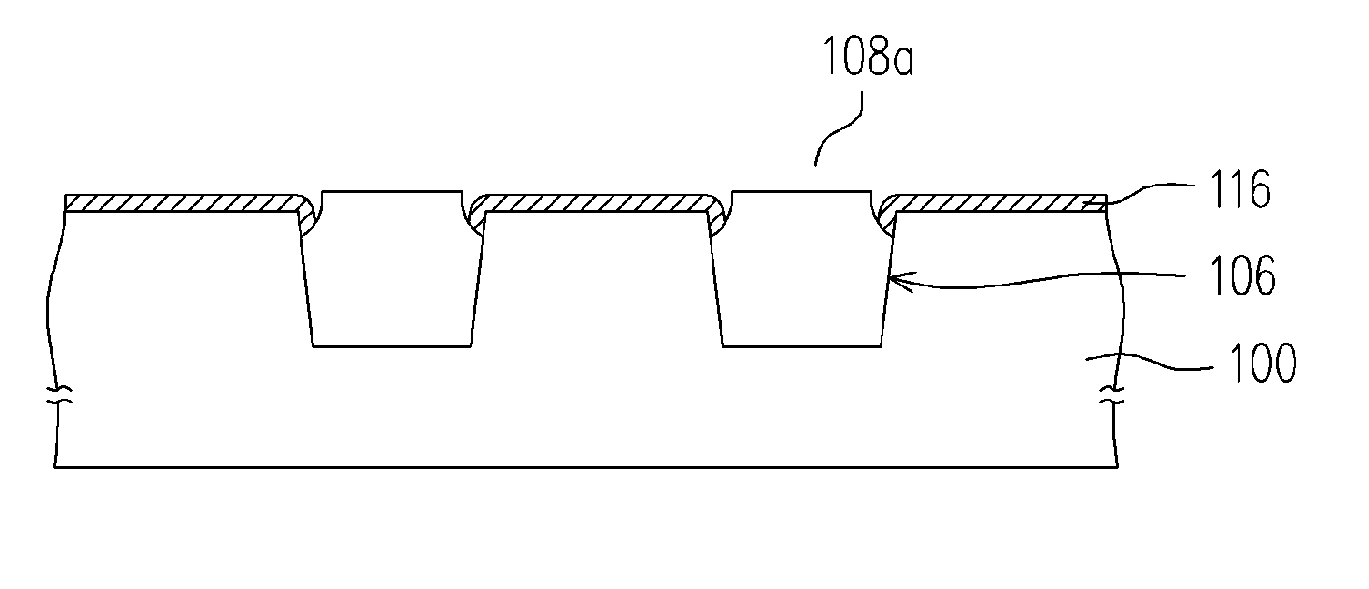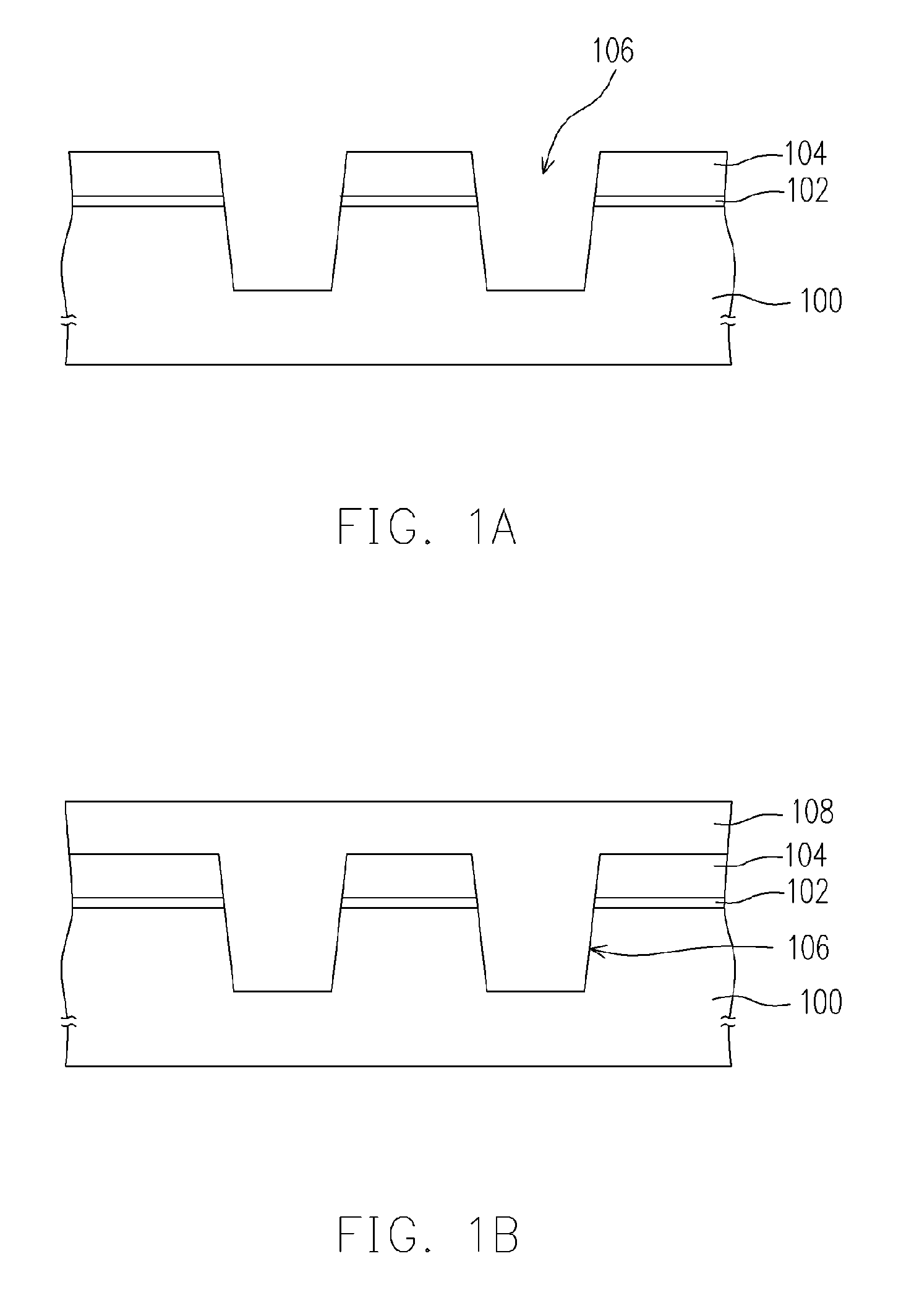Method of fabricating a gate oxide layer
- Summary
- Abstract
- Description
- Claims
- Application Information
AI Technical Summary
Benefits of technology
Problems solved by technology
Method used
Image
Examples
Embodiment Construction
[0022]FIGS. 1A to 1G are schematic, cross-sectional view diagrams of a part of a semiconductor device for illustrating the fabrication process for a gate oxide layer according to one embodiment of the present invention.
[0023] Referring to FIG. 1A, a substrate 100, for example, a silicon substrate, is provided. A pad oxide layer 102 is formed on the substrate 100. A material used in forming the pad oxide layer 102 is, but not limited to, silicon oxide. The pad oxide layer 102 is formed by thermal oxidation, for example. The pad oxide layer 102 serves to protect the substrate 100 underneath from being damaged due to stress generated from the subsequently formed mask layer (silicon nitride layer).
[0024] A mask layer 104 is then formed on the pad oxide layer 102. The mask layer 104 is formed with, but not limit to, a silicon nitride material. The mask layer 104 is formed by chemical vapor deposition (CVD), for example. A photoresist layer (not shown) is further formed to cover the sub...
PUM
 Login to View More
Login to View More Abstract
Description
Claims
Application Information
 Login to View More
Login to View More - R&D Engineer
- R&D Manager
- IP Professional
- Industry Leading Data Capabilities
- Powerful AI technology
- Patent DNA Extraction
Browse by: Latest US Patents, China's latest patents, Technical Efficacy Thesaurus, Application Domain, Technology Topic, Popular Technical Reports.
© 2024 PatSnap. All rights reserved.Legal|Privacy policy|Modern Slavery Act Transparency Statement|Sitemap|About US| Contact US: help@patsnap.com










